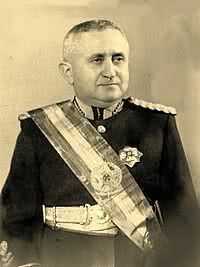The agricultural revolution was a period of change in the production system in Europe between the 18th and 19th centuries. This is called the second agricultural revolution.
The first agricultural revolution took place 10 thousand years a. a., in the neolithic period. At this time in history, men migrated from hunting and gathering to agriculture.
Summary
The contemporary agricultural revolution occurred with the increase of technologies to the techniques applied until then.
The objective was to increase production and productivity. The results were obtained through techniques such as crop rotation, seed diversification and equalization of space for livestock.
In England the law was passed that allowed the purchase of public fields by the upper bourgeoisie. The act forced the migration of small farmers to cities.
These workers, later, would be the manpower that would supply the factories during the Industrial Revolution.
Agricultural improvement was also achieved through:
- Use of horses, which increased productivity and reduced the need for human force employed from planting to harvest
- Large-scale planting of new products, including potatoes and corn
- Limitation of common lands for small farmers
- Land concentration - latifundium
- Favorable climate for crops with greater access
- Increased livestock activity
- better yield
- Changing ownership patterns
- Investment in research to reduce soil impoverishment
- Production of nutrients to enrich the soil and ensure food production
Agricultural Revolution in the Neolithic Period
The Neolithic period (8 thousand BC Ç. to 5 thousand a. C.) is marked by the phenomenon that came to be called the first agricultural revolution.
It is in this period of human history that man discovers fire. The discovery enables the beginning of the control of techniques to dominate food production.
Rustic tools from the Paleolithic period (3.5 million BC Ç. to 8 thousand a. C.) are perfected for agricultural activity. That's why this phase is also called the Neolithic Revolution.
In addition to agriculture, man comes to dominate animal husbandry. Both factors are decisive for reducing travel in search of water and food. Until then, tribes were essentially nomads, hunters and gatherers.
urban revolution
Agricultural communities that emerged in the Neolithic gave rise to the first urban centers. As they stopped being nomads, the tribes were concentrated around agricultural activity. This period is called the urban revolution.
The first urban and self-sufficient communities began to emerge in southern Mesopotamia.
Industrial Revolution
The industrial revolution took place from England in the 18th century. It was marked by the replacement of labor by the machine.
Among its consequences were the crisis of the Ancien Régime, the consolidation of industrial capitalism and the end of the Middle Ages.
Complete your research. Read too:
- Industrial Revolution
- Causes of the Industrial Revolution
- Consequences of the Industrial Revolution
- Neolithic Period or Polished Stone Age
- Prehistory
- Man in Prehistory



